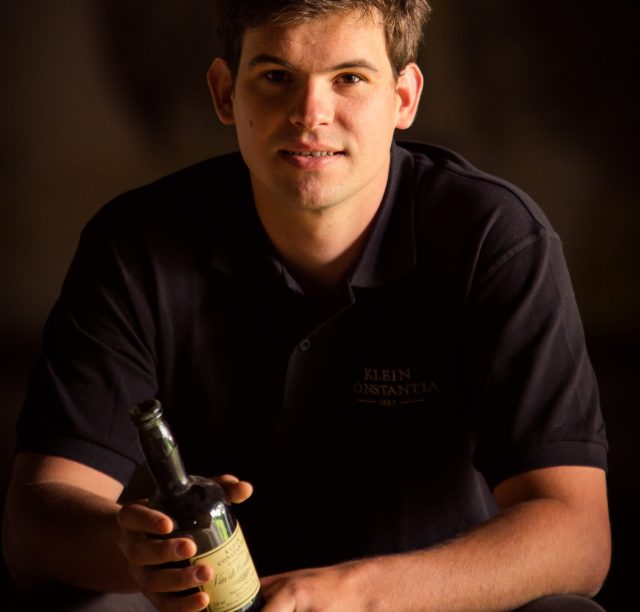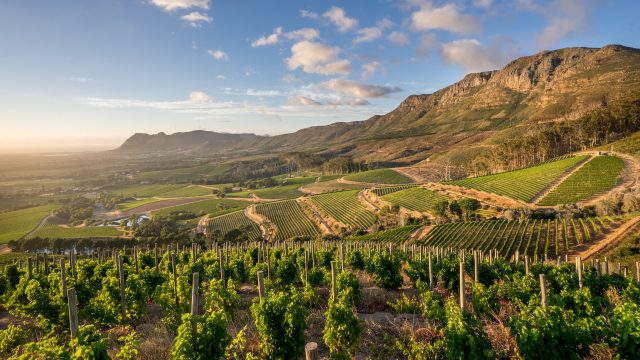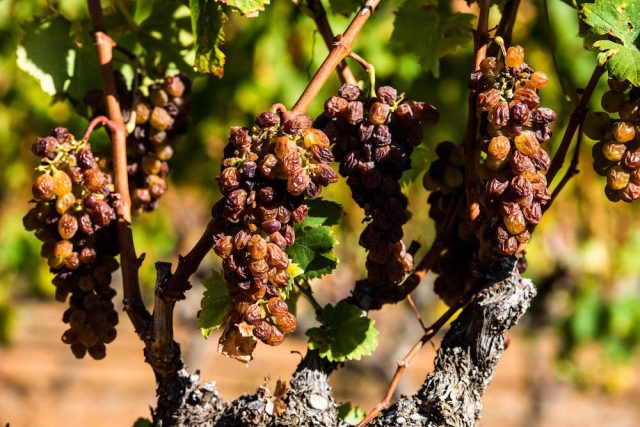This website uses cookies so that we can provide you with the best user experience possible. Cookie information is stored in your browser and performs functions such as recognising you when you return to our website and helping our team to understand which sections of the website you find most interesting and useful.
“Sweet wines have become quite boring”: Vin de Constance looks to the future
Vin de Constance is the legendary dessert wine quaffed by kings and poets, and celebrated by Dickens, Baudelaire and Austen. But the man who makes today’s ‘Constantia Wyn’ is determined to look to the future, not the past. Richard Woodard reports.

When you’re responsible for the 21st-century incarnation of one of the world’s most famous wines, the obvious temptation must be to leave well alone; to pay more attention to history than modernity, and to place a higher value on tradition than innovation.
Not so Matt Day, winemaker at Klein Constantia and Anwilka, whose responsibilities include the fabled Vin de Constance dessert wine. “I’m not going to talk about Charles Dickens or Jane Austen,” he says, dropping the names of two of ‘Constantia Wyn’s’ most famous 19th- century fans.
“Because at Klein Constantia, the future is more important than the past.”
It’s well over three decades now since the mid-1980s revival of Klein Constantia as a wine estate, and the release of the first ‘new’ Vin de Constance in 1990. Day himself has been working on the property since 2008, and was made head winemaker in 2012, following Klein Constantia’s acquisition a year earlier by Zdenĕk Bakala and Charles Harman.

“I was given one chance to prove myself,” Day recalls. Eleven years on, it seems to have worked out.
The change of ownership signalled an end to the slightly scattergun approach to Vin de Constance, and the beginning of a more systematic reboot of the wine, from vineyards to winemaking and ageing.
The early 2010s were all about the vineyard and a greater focus on sustainability, including organic farming practices, and the planting of more Muscat de Frontignan bush vines.
“Bush vines are very important,” says Day. “They bring out a lot of natural acidity because they ripen quite early in the season.”

Acidity is vital to today’s Vin de Constance thanks to a philosophical shift that embraces delicacy and fragrance as much as lusciousness and ageability.
“The wine now is a lot lighter, a lot fresher,” says Day. “It’s a unique sweet wine in that it doesn’t taste sweet. Sugar is just a tool… Sweet wines have become quite boring. We said we’re going to make a style that will go with any meal at any part of the day.”
There are echoes here of Moët Hennessy’s new approach with Château d’Yquem. Coinciding with the release of the famed Sauternes property’s 2019 vintage in early 2022, the company outlined an international by-the-glass programme designed to persuade people to enjoy Yquem young, rather than cellaring it for decades.
That was more of a marketing ploy than a change of winemaking style (although Yquem 2019 has a historically high 45% of Sauvignon Blanc in the blend), but the principle – that these are wines that can be enjoyed for their vibrancy when young – is the same.
For Vin de Constance, 2012 was one tipping-point, and 2015/16 another, when the winery was rebuilt (“The most difficult time of my life, pulling out tanks, dealing with contractors,” says Day ruefully). Taste the opulent, thoroughly old-school 2014 alongside the textured, midweight 2016 – the first to benefit from the new facility’s cold skins and upright tanks – and you can see the direction of travel.
Move on to the current vintage, 2019, or the soon-to-be-released 2020, and another leap has taken place. It’s not that they lack intensity or texture, more that they ooze aromatic life and punchy acidity alongside that honeyed richness and luscious sweetness.
For Day, it’s about fine-tuning the balance between primary, secondary and tertiary flavours – taste 2014 today and the emphasis is on the tertiary, while 2020 “has just left the primary stage”.
This evolution is partly the result of all that has been learned since the estate’s revival, and since Day’s arrival there. “The point we’re trying to get to is to respect the fruit,” he explains. “In order to get the creaminess and delicacy, we’ve found that you have to get to 165g/litre residual sugar, and about 14.5% alcohol. That’s when it’s nicely balanced.”

Another winemaking tweak involves the use of a non-saccharomyces yeast prior to fermentation, which inhibits the development of unwanted micro-organisms (and off flavours), but also stimulates an additional, non-alcoholic fermentation to improve complexity.
The construction of the new winery also led to changes in the maturation policy, and the introduction of 4,500-litre foudres into the mix. While Vin de Constance 2016 was entirely matured in these (when they were brand-new), from 2019 the wine spends 18 months in 500-litre barrels, 60% of them new; then another 18 months in the foudres. The aim is a lighter touch to allow the fruit to shine through.
It may be centuries since Vin de Constance was born, but the modern custodians of one of the world’s most famous wines have in many ways had to relearn how to make it. Part of that process involves an acknowledgement of what the Klein Constantia estate does well – Vin de Constance and Sauvignon Blanc – and what it’s not so well-suited to.
In that spirit, Cabernet Franc and Merlot vines were grubbed up several years ago. “Klein Constantia is all about white wines, sweet wines,” explains Day. “We’re never going to make a rock star, 100-point red wine at Klein Constantia, we’ve realised that. We’re cool climate.”
Red wine is where Anwilka comes in – the property that lies 7km from the ocean in Stellenbosch’s Helderberg foothills, and that was merged with Klein Constantia in 2012, bringing the expertise of Hubert de Boüard and Bruno Prats with it.
Since he started making Anwilka in 2021, Day has settled on a Cabernet/Syrah blend, reserving the estate’s Malbec and Petit Verdot for second wine Petit Frère. The focus now, he says, is “to make a red wine like a white wine”, taking care over oxidation and including some whole bunch ferments in the early-picked Syrah to bring white pepper and red fruit.
If both Anwilka and Vin de Constance remain works in progress, Day seems pretty content with what has been achieved so far with the latter, while remaining mindful that there’s still more to be done.
“The goal at Klein Constantia with Vin de Constance is to become that great sweet wine of the world,” he says. “I think we’re about 98% of the way there now. To get that last 2% is going to be 100 times harder than what we’ve done in the past. We’re not there yet, but we’re almost there.”
The wines of Klein Constantia and Anwilka, including Vin de Constance, are represented in the UK by Mentzendorff.

